Scientists Are Trying A New, Interactive Way To Understand Ocean Current Data With The Help Of High-resolution
Scientists are trying a new, interactive way to understand ocean current data with the help of high-resolution global ocean simulations. In the part of the global visualization shown, the Gulf Stream features prominently. Surface water speeds are shown ranging from 0 meters per second (dark blue) to 1.23 meters per second (cyan).
This video is running at one simulation day per second. A team from our Advanced Supercomputing (NAS) facility at our Ames Research Center has developed a new visualization tool that is being used by researchers to study the behavior of ocean currents. The new visualization tool provides high-resolution views of the entire globe at once, allowing the scientists to see new details that they had missed in previous analyses of their simulation, which was run on our Pleiades supercomputer.
For more information, visit: https://www.nasa.gov/feature/ames/scientists-explore-ocean-currents-through-supercomputer-simulations
Make sure to follow us on Tumblr for your regular dose of space: http://nasa.tumblr.com
More Posts from Nasa and Others
First All-Woman Spacewalk
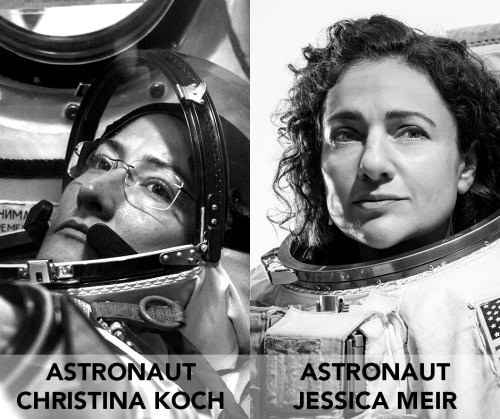
NASA astronauts and best friends, Christina Koch and Jessica Meir, made history Friday, October 18, 2019, by conducting the first all-woman spacewalk outside the International Space Station (ISS)! The Expedition 61 flight engineers ventured into the vacuum of space at 7:38 a.m. EDT to swap out a failed power controller that regulates the batteries used to collect and distribute power to the orbital laboratory – a task that took a total of seven hours and 17 minutes to complete.
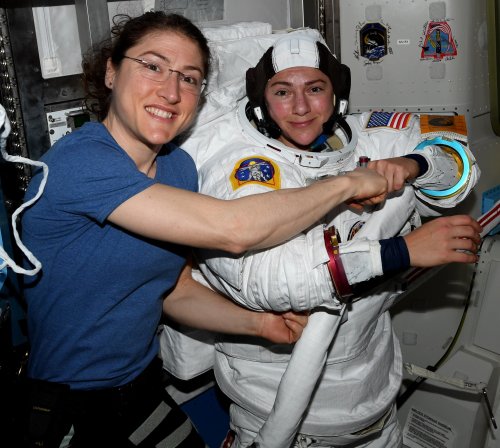
This was Koch’s fourth spacewalk and Meir’s first. Both women, selected as astronaut candidates in 2013, are on their first trip to work and live aboard the space station. Meir will be the 15th woman to spacewalk, and the 14th U.S. woman.
Get to know the astronauts
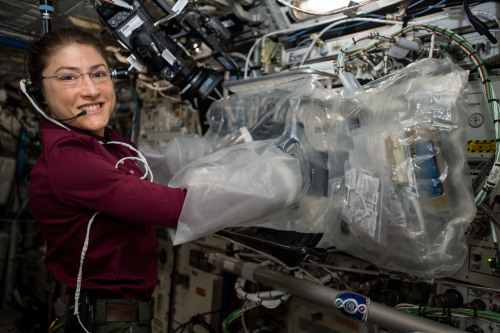
In addition to being an astronaut, Christina Koch is an engineer and physicist. Her career has taken her to extreme parts of the planet to conduct scientific field missions in places like the Antarctic South Pole and Greenland’s Summit Station. Prior to being selected as an astronaut candidate in 2013, she worked as an Electrical Engineer at our Goddard Space Flight Center’s Laboratory for High Energy Astrophysics.
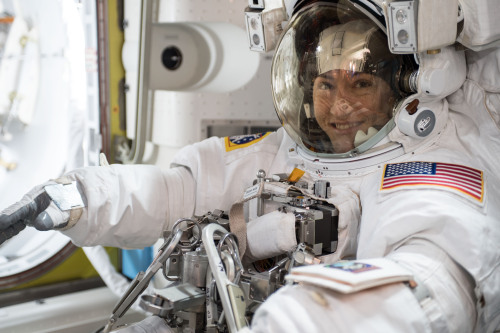
Koch left Earth on March 14, 2019, and is slated to set a record for the longest single spaceflight by a woman with an expected total of 328 days in space. Her extended mission will provide researchers the opportunity to observe the effects of long-duration spaceflight on a female body in preparation for human missions to the Moon and Mars.
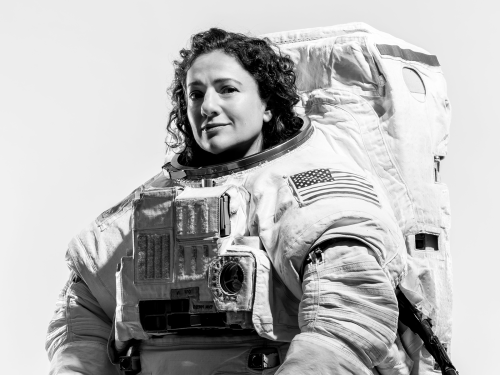
Jessica Meir dreamed of the day she would make it to space since the age of five. That dream became a reality on Wednesday, Sept. 25, 2019 as she left Earth on her first spaceflight – later floating into her new home aboard the International Space Station.
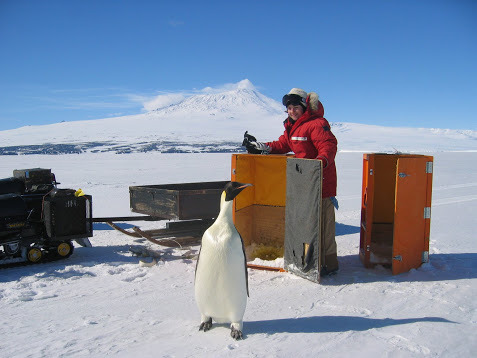
While Meir’s new home is more than 200 miles over the Earth, she is no stranger to extreme environments. She studied penguins in Antarctica and mapped caves in Italy – both of which prepared her for the ultimate extreme environment: space.
#AllWomanSpacewalk, what’s the deal?
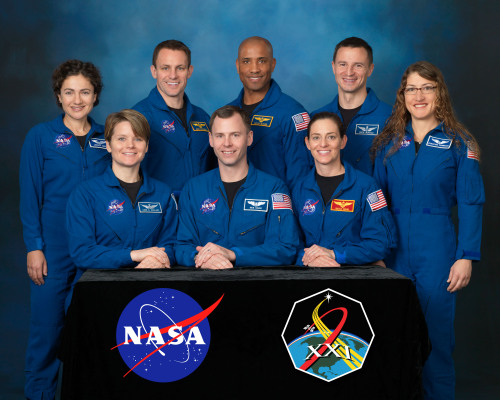
The all-woman spacewalk wasn’t something we purposefully planned; it is a testament to the increasing number of female astronauts in the space program. For example, Koch’s and Meir’s 2013 class of astronaut candidates was 50 percent women!
When asked in an interview about the importance of conducting her mission and this spacewalk, Koch said,
“In the end, I do think it’s important, and I think it’s important because of the historical nature of what we’re doing. In the past women haven’t always been at the table. It’s wonderful to be contributing to the space program at a time when all contributions are being accepted, when everyone has a role. That can lead in turn to increased chance for success. There are a lot of people who derive motivation from inspiring stories of people who look like them, and I think it’s an important story to tell.”
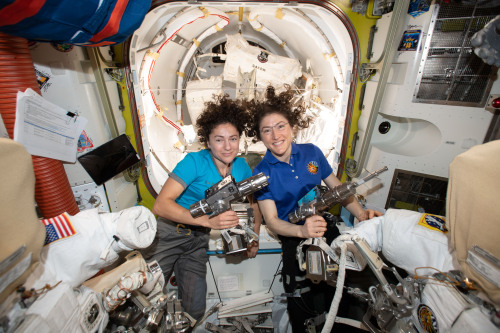
It’s important to note that spacewalks are not easy; astronauts typically describe them as the most physically challenging thing they do. Assignments are made on the basis of which astronauts are the best prepared to accomplish the tasks at hand under the conditions at the time. Today, Koch and Meir were the top astronauts for the job.
Women are no stranger to spacewalks!

While this was the first spacewalk to be conducted entirely by women, women are no strangers to spacewalks. Exactly 35 years and one week ago, Kathryn Sullivan (pictured above) made her own historic debut as the first U.S. woman to conduct a spacewalk. Since then, a total of 14 women (15 including Jessica) have ventured into the vacuum of space on 40 different spacewalks. Former Astronaut Peggy Whitson performed a record number of 10! From Astronauts to mission directors, women have been making their mark at the agency for decades now. A few of our recent pioneers are:
Astronaut Kate Rubins: First person to sequence DNA in space
Astronaut Peggy Whitson: First woman to command the ISS
Sandra Cauffman: Director of our Earth Science’s Division
Nicola Fox: Director of our Heliophysics Division
Lori Glaze: Director of our Planetary Science Division
Coming soon: The first woman to walk on the Moon
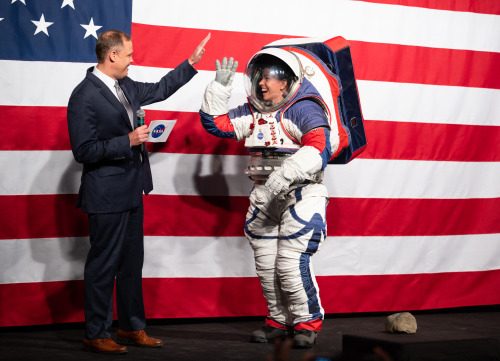
The first all-woman spacewalk is a milestone worth noting and celebrating as we look forward to putting the first woman and the next man on the Moon by 2024 with our Artemis lunar exploration program. With today’s historic event, we once again set a precedence for women to lead in space exploration.
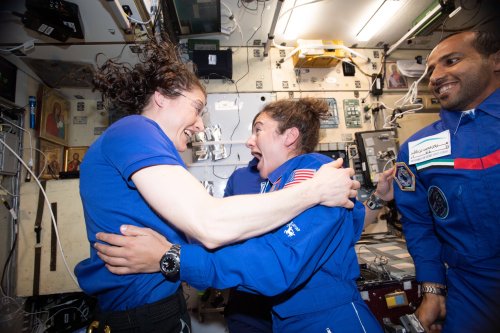
We hope achievements such as this provide inspiration to you all around the world, proving that hard work can lead you to great heights. This is not just a historic day for NASA, but a moment we can all feel proud of.
Didn’t have time to tune in? Check out the replay, here. Koch was wearing the spacesuit with red stripes, while Meir’s had no stripes.
If you’d like to keep up with Christian Koch and Jessica Meir’s work 254 miles above planet Earth, follow them on Twitter at @Astro_ Christina and @Astro_Jessica.
Be sure to follow us on Tumblr for your regular dose of space: http://nasa.tumblr.com
Far from Westeros, a Three-Eyed Raven Helps NASA Find Its Way
Perched on the outside of the International Space Station is Raven—a technology-filled module that helps NASA develop a relative navigation capability, which is essentially autopilot for spacecraft. Raven has been testing technologies to enable autonomous rendezvous in space, which means the ability to approach things in space without human involvement, even from the ground.

Developed by the Satellite Servicing Projects Division (SSPD), our three-eyed Raven has visible, infrared, and Lidar sensors and uses those “eyes” to image and track visiting spacecraft as they come and go from the space station. Although Raven is all-seeing, it only sees all in black and white. Color images do not offer an advantage in the case of Raven and Restore-L, which also utilize infrared and Lidar sensors.
The data from Raven’s sensors is sent to its processor, which autonomously sends commands that swivel Raven on its gimbal, or pointing system. When Raven turns using this system, it is able to track a vehicle. While these maneuvers take place, NASA operators evaluate the movements and make adjustments to perfect the relative navigation system technologies.

A few days ago, Raven completed its 21st observation of a spacecraft when it captured images of Northrop Grumman’s Cygnus vehicle delivering science investigations and supplies as part of its 11th commercial resupply services mission, including another SSPD payload called the Robotic External Leak Locator.

And just last month, Raven celebrated its two-year anniversary in space, marking the occasion with an observation of SpaceX’s Crew Dragon during the Demo-1 mission.

What is this—a spacecraft for ants??
While this shot of Dragon isn’t terribly impressive because of where the spacecraft docked on station, Raven has captured some truly great images when given the right viewing conditions.
From SpaceX Dragon resupply mission observations…

…to Cygnus supply vehicles.

Raven has observed six unique types of spacecraft.
It has also conducted a few observations not involving spacecraft, including the time it captured Hurricane Irma…

…or the time it captured station’s Dextre arm removing the Robotic Refueling Mission 3 payload, another mission developed by SSPD, from the Dragon spacecraft that delivered it to the orbiting laboratory.


Thus far, Raven has had a great, productive life aboard the station, but its work isn’t done yet! Whether it’s for Restore-L, which will robotically refuel a satellite, or getting humans to the Moon or Mars, the technologies Raven is demonstrating for a relative navigation system will support future NASA missions for decades to come.

Make sure to follow us on Tumblr for your regular dose of space: http://nasa.tumblr.com
One Hot Year after Another
Globally, 2020 was the hottest year on record, effectively tying 2016, the previous record. Overall, Earth’s average temperature has risen more than 2 degrees Fahrenheit since the 1880s.

Temperatures are increasing due to human activities, specifically emissions of greenhouse gases, like carbon dioxide and methane.
Heat and the energy it carries are what drive our planet: winds, weather, droughts, floods, and more are expressions of heat. The right amount of heat is even one of the things that makes life on Earth possible. But too much heat is changing the way our planet’s systems act.
My World’s on Fire
Higher temperatures drive longer, more intense fire seasons. As rain and snowfall patterns change, some regions are getting drier and more vulnerable to damage, setting the stage for more fires.

2020 saw several record-breaking fires, both in Australia in the beginning of the year, and in the western U.S. through northern summer and fall. Smoke from fires in both regions reached so high into the atmosphere that it formed clouds and continues to travel around the globe today.

In the Siberian Arctic, unusually high temperatures helped drive at least 19 fires in the region. More than half of them were burning peat soil -- decomposed organic materials -- that stores a lot of carbon. Peat fires release vast amounts of carbon into the atmosphere, potentially leading to even more warming.

The Water’s Getting Warm
It wasn’t just fire seasons setting records. 2020 had more named tropical storms in the Atlantic and more storms making landfall in the U.S. than any hurricane season on record.

Hurricanes rely on warm ocean water as fuel, and this year, the Atlantic provided. 30 named storms weren’t the only things that made this year’s hurricane season notable.

Storms like Eta, Delta, and Iota quickly changed from smaller, weaker tropical storms into more destructive hurricanes. This rapid intensification is complicated, but it’s likely that warmer, more humid weather -- a result of climate change -- helps drive it.

The Ice Is Getting Thin
Add enough heat, and even the biggest chunk of ice will melt. That’s true whether we’re talking about the ice cubes in your glass or the vast sheets of ice at our planet’s poles. Right now, the Arctic region is warming about three times faster than the rest of our planet, which has some major effects both locally and globally.

This year, Arctic sea ice hit a near-record low. Sea ice is actually made of frozen ocean water, and it grows and thaws with the seasons, typically reaching an annual minimum extent in September.

Warmer ocean water led to more ice melting this year, and 2020’s annual minimum extent continued a long trend of shrinking Arctic sea ice extent.
A Long Trend
We study Earth and how it’s changing from the ground, the sky, and space. Using data from sensors all around the planet, we calculate the global average temperature, working with our partners at NOAA.
Many other organizations also track global temperature using their own instruments and methods, and they all match remarkably well. The last seven years were the hottest seven years on record. Earth is getting warmer.

We also study the effects of increasing temperatures, like the melting sea ice and longer fire seasons mentioned above. Additionally, we can study the cause of climate change from space, with a bird’s eye view of increasing carbon in the atmosphere.

The planet is changing because of human activities. We’re working together with other agencies to monitor changes and understand what this means for people in the future.
Make sure to follow us on Tumblr for your regular dose of space: http://nasa.tumblr.com.
From Seed to Market: How NASA brings food to the table
Did you know we help farmers grow some of your favorite fruits, veggies and grains?
Our Earth-observing satellites track rainfall amounts, soil moisture, crop health, and more. On the ground, we partner with agencies and organizations around the world to help farmers use that data to care for their fields.
Here are a few ways we help put food on the table, from planting to harvest.
Planting

Did you plant seeds in science class to watch them sprout and grow? They all needed water, right? Our data helps farmers “see” how moist the soil is across large fields.
“When you’re not sure when to water your flowers or your garden, you can look at the soil or touch it with your hands. We are sort of ‘feeling’ the soil, sensing how much water is in the soil – from a satellite,
685 kilometers (408 miles) above Earth,” said John Bolten, the associate program manager of water resources for NASA’s Applied Sciences Program.
This spring, we worked with the U.S. Department of Agriculture and George Mason University to release Crop-CASMA, a tool that shows soil moisture and vegetation conditions for the United States. Able to see smaller areas – about the size of a couple of golf courses – the USDA uses Crop-CASMA to help update farmers on their state’s soil moisture, crop health and growing progress.
Growing

It’s dangerous being a seedling.
Heavy spring rains or summer storms can flood fields and drown growing plants. Dry spells and droughts can starve them of nutrients. Insects and hail can damage them. Farmers need to keep a close eye on plants during the spring and summer months. Our data and programs help them do that.

For example, in California, irrigation is essential for agriculture. California’s Central Valley annually produces more than 250 types of crops and is one of the most productive agricultural regions in the country – but it’s dry. Some parts only get 6 inches of rain per year.
To help, Landsat data powers CropManage – an app that tells farmers how long to irrigate their fields, based on soil conditions and evapotranspiration, or how much water plants are releasing into the atmosphere. The warmer and drier the atmosphere, the more plants “sweat” and lose water that needs to be replenished. Knowing how long to irrigate helps farmers conserve water and be more efficient. In years like 2021, intense droughts can make water management especially critical.
Harvest
Leading up to harvest, farmers need to know their expected yields – and profits.
GEOGLAM, or the Group on Earth Observations Global Agricultural Monitoring Initiative, is a partnership between NASA Harvest, USDA’s Foreign Agricultural Service (FAS) and other global agencies to track and report on crop conditions around the world.
USDA FAS is one of the main users of a soil moisture measurement product developed by Bolten and his team at our NASA Goddard Space Flight Center to drive their crop forecasting system.
If you’re interested in more ways we support agriculture, stay tuned over the next few weeks to learn more about how satellites (and scientists) help put snacks on your table!
Make sure to follow us on Tumblr for your regular dose of space!
Three Ways to Travel at (Nearly) the Speed of Light

One hundred years ago, Einstein’s theory of general relativity was supported by the results of a solar eclipse experiment. Even before that, Einstein had developed the theory of special relativity — a way of understanding how light travels through space.
Particles of light — photons — travel through a vacuum at a constant pace of more than 670 million miles per hour.

All across space, from black holes to our near-Earth environment, particles are being accelerated to incredible speeds — some even reaching 99.9% the speed of light! By studying these super fast particles, we can learn more about our galactic neighborhood.
Here are three ways particles can accelerate:
1) Electromagnetic Fields!
Electromagnetic fields are the same forces that keep magnets on your fridge! The two components — electric and magnetic fields — work together to whisk particles at super fast speeds throughout the universe. In the right conditions, electromagnetic fields can accelerate particles at near-light-speed.

We can harness electric fields to accelerate particles to similar speeds on Earth! Particle accelerators, like the Large Hadron Collider and Fermilab, use pulsed electromagnetic fields to smash together particles and produce collisions with immense amounts of energy. These experiments help scientists understand the Big Bang and how it shaped the universe!
2) Magnetic Explosions!

Magnetic fields are everywhere in space, encircling Earth and spanning the solar system. When these magnetic fields run into each other, they can become tangled. When the tension between the crossed lines becomes too great, the lines explosively snap and realign in a process known as magnetic reconnection. Scientists suspect this is one way that particles — for example, the solar wind, which is the constant stream of charged particles from the Sun — are sped up to super fast speeds.

When magnetic reconnection occurs on the side of Earth facing away from the Sun, the particles can be hurled into Earth’s upper atmosphere where they spark the auroras.
3) Wave-Particle Interactions!

Particles can be accelerated by interactions with electromagnetic waves, called wave-particle interactions. When electromagnetic waves collide, their fields can become compressed. Charged particles bounce back and forth between the waves, like a ball bouncing between two merging walls. These types of interactions are constantly occurring in near-Earth space and are responsible for damaging electronics on spacecraft and satellites in space.

Wave-particle interactions might also be responsible for accelerating some cosmic rays from outside our solar system. After a supernova explosion, a hot, dense shell of compressed gas called a blast wave is ejected away from the stellar core. Wave-particle interactions in these bubbles can launch high-energy cosmic rays at 99.6% the speed of light.
Make sure to follow us on Tumblr for your regular dose of space: http://nasa.tumblr.com.
GPS: Coming to a Moon Near You!

The next generation of lunar explorers – the Artemis generation – will establish a sustained presence on the Moon, making revolutionary discoveries, prospecting for resources and proving technologies key to future deep space exploration. To support these ambitions, our navigation engineers are developing an architecture that will provide accurate, robust location services all the way out to lunar orbit.
How? We’re teaming up with the U.S. Air Force to extend the use of GPS in space by developing advanced space receivers capable of tracking weak GPS signals far out in space.

Spacecraft near Earth have long relied on GPS signals for navigation data, just as users on the ground might use their phones to maneuver through a highway system. Below approximately 1,860 miles, spacecraft in low-Earth orbit can rely on GPS for near-instantaneous location data. This is an enormous benefit to these missions, allowing many satellites the autonomy to react and respond to unforeseen events without much hands-on oversight.

Beyond this altitude, navigation becomes more challenging. To reliably calculate their position, spacecraft must use signals from the global navigation satellite system (GNSS), the collection of international GPS-like satellite constellations. The region of space that can be serviced by these satellites is called the Space Service Volume, which extends from 1,860 miles to about 22,000 miles, or geosynchronous orbit.

In this area of service, missions don’t rely on GNSS signals in the same way one would on Earth or in low-Earth orbit. They orbit too high to “see” enough signals from GNSS satellites on their side of the globe, so they must rely on signals from GNSS satellite signals spilling over to the opposite side of the globe. This is because the Earth blocks the main signals of these satellites, so the spacecraft must “listen” for the fainter signals that extend out from the sides of their antennas, known as “side-lobes.”

Though 22,000 miles is considered the end of the Space Service Volume, that hasn’t stopped our engineers from reaching higher. In fact, our simulations prove that GNSS signals could even be used for reliable navigation in lunar orbit, far outside the Space Service Volume, over 200,000 miles from Earth. We’re even planning to use GNSS signals in the navigation architecture for the Gateway, an outpost in orbit around the Moon that will enable sustained lunar surface exploration.

It’s amazing that the same systems you might use to navigate the highways are putting us on the path forward to the Moon!
Make sure to follow us on Tumblr for your regular dose of space: http://nasa.tumblr.com.
Holiday Lights from the Universe
Although there are no seasons in space, some cosmic vistas invoke thoughts of a frosty winter landscape. Here are a few stellar images of holiday wonderlands from across the galaxy…

Located in our galaxy about 5,500 light years from Earth, this region is actually a “cluster of clusters,” containing at least three clusters of young stars, including many hot, massive, luminous stars.

The outstretched “wings” of this nebula looks like a soaring, celestial snow angel. Twin lobes of super-hot gas, glowing blue in this image, stretch outward from the central star. This hot gas creates the “wings” of our angel. A ring of dust and gas orbiting the star acts like a belt, clinching the expanding nebula into an “hourglass” shape.

At this time of year, holiday parties often include festive lights. When galaxies get together, they also may be surrounded by a spectacular light show. This pair of spiral galaxies has been caught in a grazing encounter. This region has hosted three supernova explosions in the past 15 years and has produced one of the most bountiful collections of super-bright X-ray lights known.

What do the following things have in common: a cone, the fur of a fox and a Christmas tree? Answer: they all occur in the constellation of the unicorn (Monoceros). Pictured as a star forming region, the complex jumble of cosmic gas and dust is about 2,700 light-years away.

Resembling festive lights on a holiday wreath, this Hubble Space Telescope image of a nearby spiral galaxy is an iconic reminder of the impending season. Bright knots of glowing gas light up the spiral arms, indicating a rich environment of star formation.

The Hubble Space Telescope captured two festive-looking nebulas, situated so as to appear as one. Intense radiation from the brilliant central stars is heating hydrogen in each of the nebulas, causing them to glow red…like a holiday light.
Make sure to follow us on Tumblr for your regular dose of space: http://nasa.tumblr.com
Protecting our Home Planet 🌎

Did you ever wonder how we spots asteroids that may be getting too close to Earth for comfort? Wonder no more. Our Planetary Defense Coordination Office does just that. Thanks to a variety of ground and space based telescopes, we’re able to detect potentially hazardous objects so we can prepare for the unlikely threat against our planet.
What is a near-Earth object?

Near-Earth objects (NEOs) are asteroids and comets that orbit the Sun, but their orbits bring them into Earth’s neighborhood – within 30 million miles of Earth’s orbit.
These objects are relatively unchanged remnant debris from the solar system’s formation some 4.6 billion years ago. Most of the rocky asteroids originally formed in the warmer inner solar system between the orbits of Mars and Jupiter, while comets, composed mostly of water ice with embedded dust particles, formed in the cold outer solar system.
Who searches for near-Earth objects?

Our Near-Earth Object (NEO) Observations Program finds, tracks and monitors near-Earth asteroids and comets. Astronomers supported by the program use telescopes to follow up the discoveries to make additional measurements, as do many observatories all over the world. The Center for Near-Earth Object Studies, based at our Jet Propulsion Laboratory, also uses these data to calculate high-precision orbits for all known near-Earth objects and predict future close approaches by them to Earth, as well as the potential for any future impacts.
How do we calculate the orbit of a near-Earth object?

Scientists determine the orbit of an asteroid by comparing measurements of its position as it moves across the sky to the predictions of a computer model of its orbit around the Sun. The more observations that are used and the longer the period over which those observations are made, the more accurate the calculated orbit and the predictions that can be made from it.
How many near-Earth objects have been discovered so far?
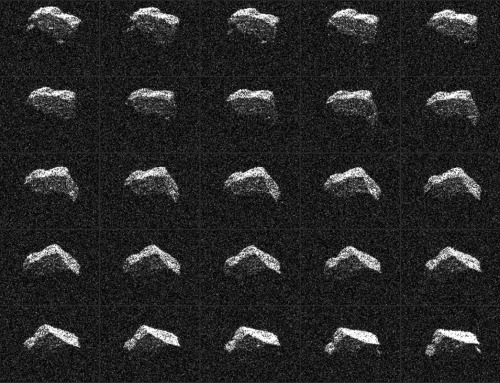
At the start of 2019, the number of discovered NEOs totaled more than 19,000, and it has since surpassed 20,000. An average of 30 new discoveries are added each week. More than 95 percent of these objects were discovered by NASA-funded surveys since 1998, when we initially established its NEO Observations Program and began tracking and cataloguing them.
Currently the risk of an asteroid striking Earth is exceedingly low, but we are constantly monitoring our cosmic neighborhood. Have more questions? Visit our Planetary Defense page to explore how we keep track of near-Earth objects.
Make sure to follow us on Tumblr for your regular dose of space: http://nasa.tumblr.com.
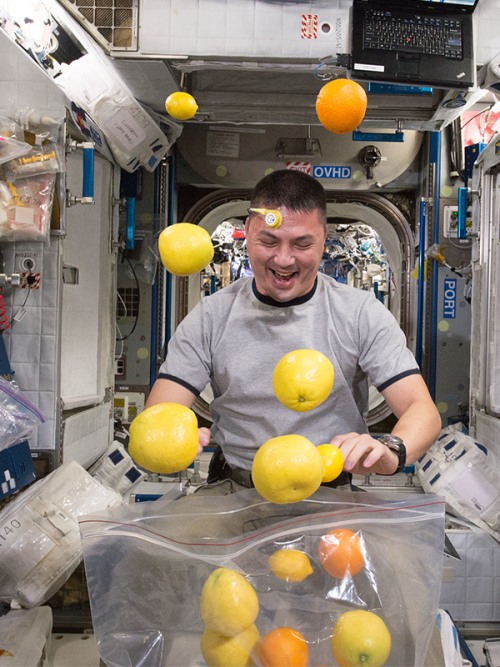
NASA Spotlight: Astronaut Kjell Lindgren
Kjell N. Lindgren was selected by NASA in 2009. Born in Taiwan while his family was stationed overseas, he spent most of his childhood abroad and returned to the U.S. to complete his education and earn a Doctorate of Medicine from the University of Colorado. He is board certified in emergency and aerospace medicine. After serving as the Deputy Crew Surgeon for Space Shuttle mission STS‐130 and Expedition 24, he was selected to join our astronaut corps. Dr. Lindgren flew on the International Space Station from July 2015 to December 2015 and logged 141 days in space. He participated in two spacewalks and in more than a hundred different scientific experiments. In his free time, Dr. Lindgren enjoys spending time with his family, running, reading, movies, photography and amateur astronomy.
He took some time from being a NASA astronaut to answer questions about his life and career! Enjoy:
What is one thing you would take to space that would make life easier?
A real R2 unit, of course! Just kidding, but in the future… Honestly though, life is pretty good on the International Space Station. While it is still a lot like camping (sleeping bags, no running water, rehydrated food) the space station team has really equipped us for success. As you all prepare for YOUR future spaceflight, I would say that the two most useful items I had with me on a daily basis were a pair of scissors and a spoon. The scissors were super useful for cutting plastic wrappers, tape, etc., and opening food packages (much more useful than a knife). And the spoon is the only utensil you need for eating – at least with the food system that we have right now.
Who helped get you to where you are?

Getting this opportunity, becoming an astronaut – that was a team effort for sure. I had so many people walking alongside me on this journey, helping me along the way. My parents set the bit early on – telling me that I could become whatever I wanted through hard work. They really gave me permission to dream big. Teachers and coaches, mentors, co-workers and friends all played a huge part in reaching this goal. Most of all, though, my wife, Kristi and my three kids have been an integral part of this adventure. I would not have this job, and I wouldn’t be successful in it without their love and daily support.
You and your crew mates were the first astronauts to harvest lettuce grown on orbit. How did it taste?

The lettuce tasted like…lettuce, which was a good thing, because if it hadn’t, then it meant we had made a huge mistake. It was so much fun to be a part of that experiment. The payoff, getting to eat fresh grown food on orbit was of course, a lot of fun. But just getting to take care of the lettuce plant, watch it grow in the sterile looking environment of the space station, getting to take care of this living thing on a daily basis, it was good for the soul.
How do you prepare for someone getting hurt or sick in space?
We train at least two crew members on every expedition to be Crew Medical Officers, or CMOs. They spend about 40 – 50 hours learning how to use the medical equipment and procedures on the space station, so that they can essentially serve as an extension of the flight surgeon in mission control. We have equipment and medication to deal with most minor illnesses and injuries. But because we are in low earth orbit, we can evacuate an ill crew member back to Earth in the event of a severe medical issue. This option won’t be available as we push out further from Earth, so we’ll need more rigorous training and a more comprehensive medical system.
How many times did you apply to be an astronaut?

I was very fortunate and got selected on my first try. I have several friends in the office though, who applied 4 or 5 times before being selected. It is amazing to go through the selection process and to meet others who share your dream. Enjoy the experience and keep applying – it is worth it!
How can I improve my chances of being selected to become an astronaut?
I recommend continuing to do things that you enjoy, continue to build experience at work and maybe look for new opportunities in your job that will grow you in your career and grow you as a leader. But choose opportunities because YOU want to do them, not based on what you think NASA is looking for. There is no one path or experience that leads to becoming an astronaut. We have an amazing diversity of experience and background in the astronaut office.
What advice do you have for the newest astronauts?

Enjoy the journey! Spaceflight is amazing, but even as astronauts, most of us spend 95% of our career on the ground. Enjoy every part of the job, supporting missions as a Spacecraft Communicator (CapCom), verifying procedures for a repair or training for a spacewalk. It is amazing to be a part of the team that launches and supports humans living and working in space. It is an amazing thing.
Which is more exciting: spacewalking or skydiving?

Skydiving was pretty amazing. I got to do quite a bit of it as a member of the Air Force Academy parachute team. But there is nothing quite like doing a spacewalk. It is an indescribable experience, putting hundreds of hours of training to work, the physical and mental challenge of operating in that harsh environment. But the view outside the space station, of the Earth, the stars, the structure of the space station – it was a highlight of my time in space and something I will never forget.
What's the most interesting part about training with the Dragon capsule?
It has been awesome working with the NASA and SpaceX teams as we are preparing to launch in the Crew Dragon capsule. My favorite part of the experience has always been and continues to be the people. Safely sending humans to space and back is one of the most difficult things humanity has ever done. That challenge attracts the best and brightest people from across our country. Getting to work with those folks at NASA and at SpaceX, to experience their enthusiasm, dedication and ingenuity on a daily basis is a gift. It has also been a lot of fun seeing a different approach to human spaceflight. I’m very familiar with how NASA and the Russian Space Agency Roscosmos operate. It has been fun seeing a different perspective and approach.
Can you share your favorite photo or video that you took in space?

Yes! This is my favorite photo of the Milky Way, with a lightning strike illuminating a solar array.
Thanks Dr. Lindgren, and good luck on your next spaceflight!
Make sure to follow us on Tumblr for your regular dose of space: http://nasa.tumblr.com.
Whats the coolest thing u have seen or discovered???!!!! Like i mean cool as in something that made u nerd out! I used to want to work for nasa but found a love for teaching art instead so i find myself nersing out over the cool research yall put out! Much love from wise county texas!
-
 davvero-annoiatx liked this · 3 months ago
davvero-annoiatx liked this · 3 months ago -
 starbounddemon liked this · 4 years ago
starbounddemon liked this · 4 years ago -
 sluzzie312 liked this · 4 years ago
sluzzie312 liked this · 4 years ago
Explore the universe and discover our home planet with the official NASA Tumblr account
1K posts